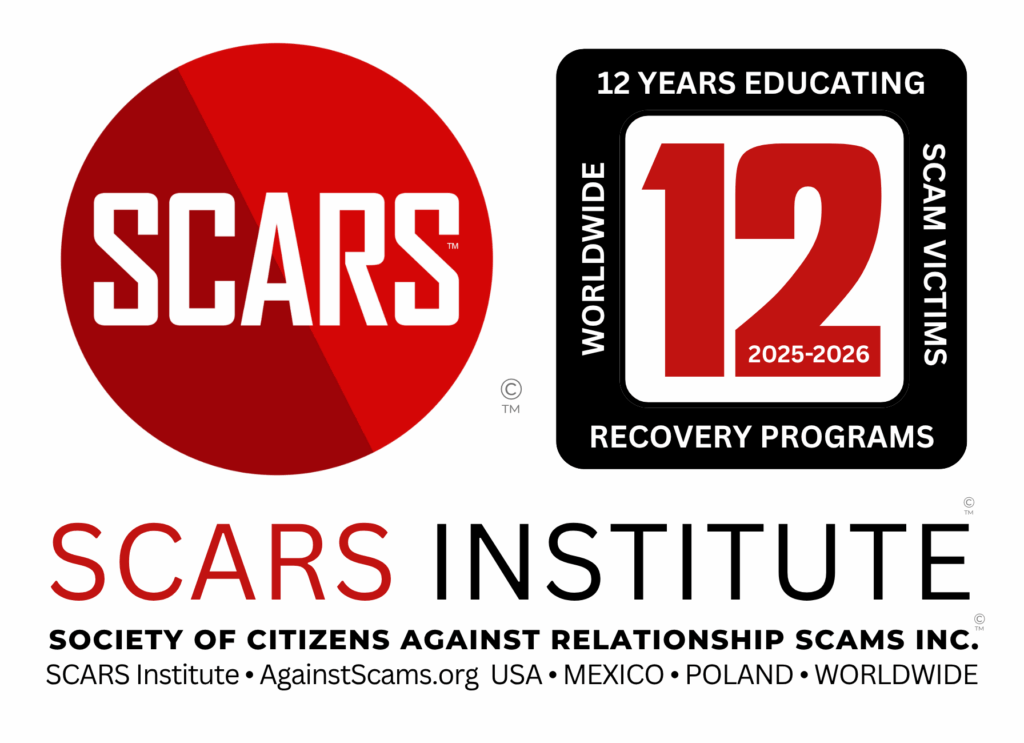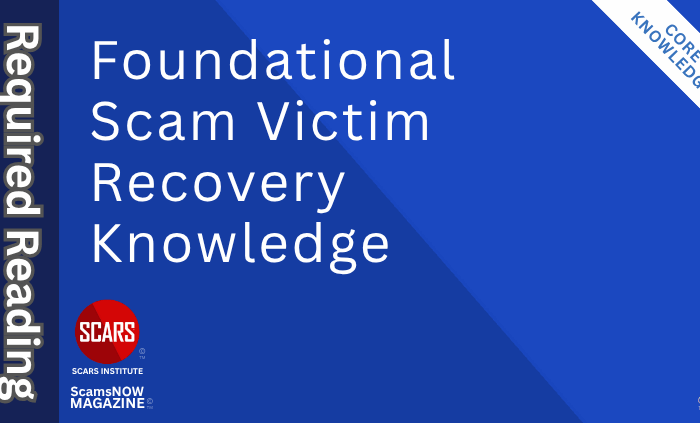
Framing and Reframing – Your Mental House Building
The Difference Between Framing and Reframing: A Guide for Betrayal-Trauma Recovery
Primary Category: Scam Victim Recovery Psychology
Authors:
• Vianey Gonzalez B.Sc(Psych) – Licensed Psychologist, Specialty in Crime Victim Trauma Therapy, Neuropsychologist, Certified Deception Professional, Psychology Advisory Panel & Director of the Society of Citizens Against Relationship Scams Inc.
• Tim McGuinness, Ph.D., DFin, MCPO, MAnth – Anthropologist, Scientist, Polymath, Director of the Society of Citizens Against Relationship Scams Inc.
Author Biographies Below
About This Article
After a scam, your mind builds fast protective stories that often turn global and self-blaming. Recovery begins by seeing the frame you are in, calming your body, then choosing reframes that are truthful, specific, compassionate, and actionable. Use a safe sequence, regulate, validate, reframe, and plan. Replace identity verdicts like “I am foolish” with accurate context like “I was groomed.” Pair new language with concrete steps such as credit freezes, secure passwords, reporting, and support groups. Avoid rushing, toxic positivity, perfectionism, and rumination, keep accountability on the offender while you take responsibility for repairs. Share your working frames with one trusted person, practice micro tools daily, expect lapses without giving up, and seek professional help if hopelessness or self-harm thoughts emerge.
Note: This article is intended for informational purposes and does not replace professional medical advice. If you are experiencing distress, please consult a qualified mental health professional.

The Difference Between Framing and Reframing: A Guide for Betrayal-Trauma Recovery
You make sense of your life through stories your mind builds in real time. After a scam, those stories can turn harsh and global. Understanding the difference between framing and reframing gives you language and tools to change those stories without denying what happened. You are not trying to talk yourself out of pain. You are learning to hold pain accurately, assign responsibility correctly, and choose thoughts that help you heal.
What Framing Is
Framing is the lens your mind uses to organize events. It decides what details feel important, which meanings stick, and what you predict next. Frames form fast after shock because the brain wants safety and certainty. In betrayal trauma, common automatic frames sound like “I should have known,” “No one is safe,” “I cannot trust myself,” or “My life is ruined.” These are not personality flaws. They are the brain’s attempt to prevent more harm.
A frame shapes attention, memory, emotion, and behavior. If your frame says “I am foolish,” you will notice every small mistake, feel shame, and pull back from new efforts. If your frame says “I was targeted by criminals,” you are more likely to feel anger and grief, seek support, and take protective steps. The event is the same. The frame changes the path.
How Trauma Sets a Frame
Recognizing your current frame is the first step. You do not have to like it. You only need to see it clearly.
- The body remembers threat. Hypervigilance and alarm narrow thinking toward worst-case scenarios.
- Grooming rewires trust. Months of daily messages and rituals build an attachment that intensifies the shock when the lie is exposed.
- Culture can add blame. Messages like “Be smarter online” become self-attack when turned inward.
- Shame shortens the story to “It is my fault,” which feels simple, even when it is untrue.
The Body Remembers Threat
Your body keeps score long after the messages stop. When you have been deceived, your nervous system shifts into protection mode. Hypervigilance becomes the default. You scan faces, texts, and bank notifications for danger. Sleep goes light, breathing stays shallow, and thinking narrows toward worst-case scenarios. This is not you being dramatic. It is a survival response that once kept you safe. The cost is that your frame tilts toward “It will happen again,” so neutral events look risky and ordinary decisions feel heavy. Start by noticing body cues. Tight jaw, racing thoughts, clenched shoulders. When you name them, you can add a brief reset, slow exhales and feet on the floor, so your mind can widen beyond threat-only interpretations.
Grooming Rewires Trust
Grooming is not a single lie. It is a training program that uses daily contact, rituals, and micro rewards to shape attachment. Good morning and good night messages, shared playlists, inside jokes, and small favors create a felt sense of closeness. Your brain bonds to the routine and the person who delivers it. When the truth breaks, the shock is amplified because you are losing a relationship and a regulation source at the same time. Your frame shifts to “I cannot trust my judgment.” That conclusion makes sense in the moment and it is not the whole story. You were trained. Reclaim trust by separating skill from attachment. Keep the capacity for closeness. Add structure to how you verify people and platforms.
Culture Adds Blame
Culture hands you shortcuts that sound like wisdom and land like blame. Phrases such as “Be smarter online” or “Only fools get scammed” become self-attack when you are hurting. These messages ignore how professionalized fraud has become and how grooming targets normal human needs. If you swallow them whole, your frame compresses to “I failed a basic life test.” Replace slogans with accuracy. “A criminal used rehearsed tactics. My reactions were human. My job now is repair.” Accuracy is not a loophole. It is the foundation for taking effective steps without dragging a shame anchor behind you.
Shame Shortens the Story
Shame offers a simple explanation that feels powerful in the moment. “It is my fault.” Simple stories reduce anxiety because they give you one target to control. The problem is that shame’s story is incomplete and corrosive. It pulls you away from help, keeps you silent, and turns learning into punishment. Trade the simple lie for a fuller truth. “The offender chose the crime. I missed some signs. I can learn and protect myself going forward.” That longer sentence is harder to say and much kinder to live with.
Seeing the Frame You Are In
Recognizing your current frame is the first step. You do not have to like it. You only need to see it clearly. Try a quick check: write one sentence about what the scam means about you, one about people, and one about your future. Read them out loud. If they are global, permanent, and self-blaming, you have found the frame. Now you can begin to adjust it toward truth, compassion, and action.
What Reframing Is
Reframing is the intentional practice of adjusting the meaning you give an event so it becomes more accurate, more balanced, and more useful for recovery. It is not pretending. It is not forced positivity. It is choosing language that places responsibility on the offender, acknowledges your feelings, and points your attention toward actions that restore safety and dignity.
Good reframes pass four tests. They are truthful, specific, compassionate, and actionable.
- Truthful: “A criminal groomed me,” not “Nothing happened.”
- Specific: “I missed red flags during weeks 3 to 6,” not “I always miss everything.”
- Compassionate: “My reactions make sense,” not “I am pathetic.”
- Actionable: “I can add two verification steps,” not “I must never trust again.”
What Reframing Is Not
- It is not minimizing. “It is fine” blocks healing.
- It is not blaming yourself to feel in control. “It is my fault” is not a plan.
- It is not spiritual bypassing. “Everything happens for a reason” often silences real grief.
- It is not rushing. If your body is in high alarm, regulate first, reframe second.
A Safe Sequence: Regulate, Validate, Reframe, Plan
-
- Regulate your body. Slow exhales, feet on the floor, look around the room, name five things you see.
- Validate your feelings. “I feel shocked and ashamed. That makes sense after a deception.”
- Reframe the meaning. “A criminal engineered this. I was targeted, not foolish.”
- Plan one small step. “Freeze my credit today at 4 p.m.”
Regulate Your Body
Begin with your nervous system. You cannot think clearly while your body is sounding an alarm. Sit with both feet on the floor. Lengthen your exhale so it is a little longer than your inhale. Look around the room and name five things you see, four things you feel, three things you hear, two things you smell, and one thing you taste. Unclench your jaw and lower your shoulders. If you can, stand and stretch or take a short walk down the hall. Remind yourself, “Right now I am safe in this room.” Give it ninety seconds. Most emotional surges crest and ease if you keep breathing slowly and keep your eyes on ordinary objects.
Validate Your Feelings
Now put words to what is happening inside. Say it out loud or write it down: “I feel shocked and ashamed. That makes sense after a deception.” Validation is not approval of what happened. Validation is accurate naming of your human response. You are not weak for feeling what you feel. You were targeted, stressed, and flooded. Keep sentences short and kind. Try, “Anyone in my position would be hurting,” and, “My reactions are understandable.” Resist the urge to argue with your feelings or lecture yourself. Your goal is to be a steady witness, not a critic.
Reframe the Meaning
With the alarm lower and your feelings named, adjust the story to include the missing truth. Say, “A criminal engineered this. I was targeted, not foolish.” Move from global judgments to specific facts. Swap “I cannot trust myself” for “I can learn verification skills and use them next time.” Notice thinking habits that make pain heavier, like all or nothing phrases and mind reading. Choose accurate language that keeps responsibility where it belongs, on the offender, and keeps agency where it belongs, with you.
Plan One Small Step
Finish by choosing a single action you can complete today. Make it tiny, time stamped, and visible. “Freeze my credit today at 4 p.m.” or “Email the support group link to myself before lunch.” Write it on a card or set a reminder. After you do it, mark it done and name the win: “I took a step.” If the step feels too big, cut it in half until it fits. Small, finished actions rebuild control faster than big, unfinished plans. Repeat the sequence whenever the wave returns.
Spotting Your Current Frame
Start by catching the story your mind is telling right now. Use three quick prompts. Say the first sentence that appears, then write it down without editing.
- “This happened, which means I am ______.”
- “This happened, which means people are ______.”
- “This happened, which means my future is ______.”
Look at what you wrote. You are not grading it. You are observing it. Notice the words that carry weight. Watch for absolutes like “always,” “never,” “everyone,” “no one.” Those words often reveal a frame rather than a fact. Frames are shortcuts your brain uses to make sense of pain. They feel true because they are simple. They are not the whole story.
Circle identity labels. If you see “I am foolish,” “I am unlovable,” or “I am broken,” that is a clue. Identity labels turn one event into a verdict on your worth. Swap identity for situation to test it. Say, “A criminal deceived me,” or “I was targeted during a lonely season.” Feel the difference in your body when you read each out loud.
Underline predictions. If you see “I will never trust anyone,” or “My future is ruined,” name them as predictions, not facts. Ask two questions. “What is the evidence for and against this?” and “What would I tell a friend who wrote this?” Write your answers under the sentence. Often you will find a more accurate line waiting to be said.
Mark any global statements about people. If you wrote “People are cruel,” or “Everyone is dangerous,” add two exceptions you have known. A kind neighbor. A helpful teller. A friend who showed up. You are not erasing harm. You are loosening a frame that makes the world smaller than it is.
Now rate each sentence from 0 to 10 for how much it helps you act with care today. Low scores tell you where a reframe could serve you. Try a gentle alternative right under the original. Examples:
- Original: “I am unworthy.”
Alternative: “I was harmed. My worth did not change.” - Original: “People are unsafe.”
Alternative: “Some people choose harm. Many choose care.” - Original: “My future is doomed.”
Alternative: “My future is under repair. I can take one step.”
Give your frame a short name so you can spot it faster next time. Unworthy. Unsafe. Doomed. Alone. Write, “The ‘unworthy’ frame is showing up.” Externalizing lowers its power. It becomes a visitor, not your identity.
Close with a two-minute check. Read the new lines out loud. Place a hand on your chest and one on your belly. Breathe slowly and ask, “Which sentence helps me move one inch toward safety today?” Circle that one. That is your working frame for now. You can update it tomorrow.
Building Reframes That Hold
Use these practical shifts. Speak them out loud if you can.
- From global to specific
“I am gullible” → “I was groomed in this situation using tactics designed to bypass defenses.” - From permanent to time-limited
“I will never trust again” → “Trust is hard right now. With skills and time, I can learn careful trust.” - From self-blame to accurate responsibility
“I caused this” → “The offender chose the crime. I choose the repairs.” - From helpless to skills-focused
“There is nothing I can do” → “I can stop contact, save evidence, report, and protect my accounts.” - From isolation to connection
“No one will understand” → “Many people have lived this. Support is available and I can take it in pieces.”
Examples Across Common Injury Areas
Trust in Yourself
-
- Frame: “My judgment is broken.”
- Reframe: “My judgment was exploited. The same sensitivity that made me a target can help me heal when paired with structure.”
- Plan: two-step verification for people and platforms, and a 24-hour pause before any financial decision.
View of Others
-
- Frame: “People are dangerous.”
- Reframe: “Some people exploit. Others protect and repair. I can learn to sort carefully.”
- Plan: choose one safe support space; practice consent-based sharing; avoid secrecy.
Identity and Worth
-
- Frame: “This proves I am weak.”
- Reframe: “This shows I am human. I reached for connection. I can be hurt and still be strong.”
- Plan: name one value you kept, like honesty or care, and do a small action that honors it today.
Money and Control
-
- Frame: “I lost money, which means I lost my future.”
- Reframe: “I lost money, not my capacity. I can rebuild with steady habits and help.”
- Plan: create a 30-day essentials budget; schedule one call with a reputable financial counselor.
Urges to Contact or Investigate
-
- Frame: “I need closure, then I will feel better.”
- Reframe: “Contact reopens the wound. Closure comes from my choices, not their words.”
- Plan: write an unsent letter; block and report; replace the urge with a 10-minute grounding routine.
Micro-Tools You Can Use Today
-
- The 60-second name-and-aim
Name the feeling, name the frame, aim a reframe. “I feel ashamed. My frame says I am foolish. A truer frame is that I was groomed. My next step is to drink water and send one email.” - The three-column check
Column 1, the thought. Column 2, the facts. Column 3, a kinder, truer thought plus one action. Keep it to one sentence each. - The “and” statement
Pair two truths to widen the map. “I am angry, and I am learning skills.” “I feel afraid, and I am safe in this room.” - The “yet” add-on
“I cannot sleep well, yet I can practice a short routine tonight.” - If–then plans
“If I feel the urge to check their profile, then I will text a support buddy and go for a five-minute walk.”
- The 60-second name-and-aim
Timing Matters
Reframing works when your body has enough calm to think. If you are in a surge of panic or in a heavy collapse, start with regulation. Place your feet on the floor. Lengthen your exhale. Look around the room and name five things you see. Sip water. Move your shoulders. When your breath settles and your focus widens, you are closer to the zone where new thoughts can land.
Let grief crest without a fight. If tears rise, you let them come. If anger heats, you give it a safe container. You can say, “I will feel this for two minutes, then I will check in again.” Reframing is not a trick to outrun feelings. It is a way to give feelings an accurate home so they stop spilling everywhere.
Use a simple readiness check. Ask your body three questions. “Is my breath steady enough?” “Can my eyes scan the room without locking on one point?” “Are my thoughts moving a little slower?” If you can answer yes to two of the three, you can try a gentle reframe. If not, you return to regulation for a few more minutes.
Work in small windows. You can say, “I will do one minute of calm, one minute of truth, then I will rest.” Keep the truth kind and precise. “A criminal engineered this.” “My reaction makes sense.” “One step is enough today.” If you feel your body tipping back into alarm, you pause. You can whisper, “Not yet. I will come back when I am steadier.”
This is pacing, not avoidance. You are pairing feeling and thinking in doses you can hold. Over time, the window widens. Reframing then becomes a tool that sticks, because you use it when your system can receive it.
Avoiding Common Pitfalls
-
- Too early, too fast. Let your nervous system settle first.
- Toxic positivity. Skip “It could be worse.” Choose “This is hard, and I can take one step.”
- Perfectionism. There is no perfect reframe, only helpful ones.
- Rumination dressed as reframing. If you are looping, pause and ground.
- Using reframes to excuse crime. Accountability stays with the offender.
Too early, too fast
Reframing before your body settles keeps you stuck. Check your state first. If your breath is shallow, your jaw is tight, or your thoughts feel sprinting, pause. Do sixty seconds of slow exhales, plant your feet, scan the room, sip water. When your focus widens and your breath evens, then try a new thought. You can say, “Not yet. I will reframe after I calm.”
Toxic positivity
Hope helps. Denial hurts. Skip lines like “It could be worse.” Choose truth plus agency. Try, “This is hard, and I can take one step.” Pair every hopeful statement with one concrete action. That keeps your words from floating and teaches your body that relief follows honesty, not avoidance.
Perfectionism
There is no perfect reframe. There are only helpful ones. Treat each reframe as a working draft. Aim for “one notch kinder and more accurate” rather than flawless. You can say, “Good enough for today.” If a phrase reduces shame and returns focus, it passes.
Rumination dressed as reframing
If you are turning the same sentence for ten minutes, you are looping, not healing. Set a two-minute timer. Write a single reframe. Read it once. Then ground your body. Stand, stretch, look outside, breathe. You can tell yourself, “Thinking time is over. Feeling time, then action.” Return later if needed.
Using reframes to excuse crime
A reframe moves blame off you. It does not move blame off the offender. Keep accountability in place. Try a two-line format. “A criminal engineered this.” “I am responsible for my recovery steps.” If a reframe starts to sound like justification for what happened, rewrite it until responsibility is accurate and clear.
A simple safeguard
End each practice with one small plan, one kind sentence, and one body cue. “Freeze my credit at 4 p.m.” “I did not cause a crime.” Slow exhale for ten counts. This trio keeps reframing grounded, compassionate, and useful.
Integrating Reframing With Real Support
Reframing is sturdier when paired with connection and procedures. Share your new language with one safe person. Ask them to echo it back during hard moments. Pair reframing with steps that change your environment: credit freezes, password resets, reporting through official channels, and joining a trauma-informed support group. Your mind learns from your words and from your actions.
Simple Daily Practice
- Morning, one sentence that sets your frame and one small action. “I was targeted by a criminal. Today I will call the bank at 10.”
- Midday, a 2-minute breath and a quick reframe of any harsh thought that showed up.
- Evening, name one win and one support you used. “I blocked a number. I texted a friend.” Then a short, kind sentence to yourself: “I am learning.”
When to Ask for More Help
If your frames are stuck on self-attack, if sleep and appetite are disrupted for weeks, if you feel hopeless or have thoughts of self-harm, reach out to a trauma-informed counselor and to crisis supports in your country. Asking for help is not a failure of grit. It is an act of care that teaches you and your future self what strength looks like.
Remember
Framing is the story your brain grabbed to keep you safe. Reframing is the story you choose to keep you moving. You are not erasing what happened. You are putting it in the right place, giving responsibility the right home, and giving yourself sentences that let your body calm and your life continue. You can feel hurt and still choose a frame that honors your worth, your capacity, and the next kind step.
Conclusion
You do not have to believe harsh stories about yourself to feel safe again. After betrayal, your mind grabs fast meanings to protect you; your body narrows attention to threats. That is how frames form. You honor that reality first: calm the alarm, name what you feel, and keep responsibility accurate. From there, you practice reframing as a steady craft, truthful, specific, compassionate, and tied to one small action. “I was targeted by a criminal. My reactions make sense. Today I will take one step.”
Pace matters. You regulate before you reason. When grief crests, you let it move through; when panic spikes, you ground. Reframing is not a shortcut around feelings. It is how you give feelings a precise home so they stop defining you. Helpful frames widen choices: from “I am broken” to “I was harmed and I am repairing”; from “no one is safe” to “some people exploit, many protect, and I can learn to sort carefully.”
Keep it practical. Use short tools you can repeat anywhere: sixty seconds of slow exhales; the three prompts about self, others, future; the three-column check (thought, facts, kinder-truer thought + one action); the two-line accountability split, offender responsible for the crime, you responsible for repairs. Share your working frames with one trusted person and ask them to mirror them back when you wobble. Pair mindset work with procedures, credit freezes, secure passwords, reporting, and trauma-informed support, so your nervous system sees change in action.
Expect setbacks. If you slip into old frames, you are not failing, you are learning. Return to the sequence: regulate, validate, reframe, plan. If despair, self-harm thoughts, or weeks of sleep/appetite disruption appear, reach for professional help and crisis supports. Strength is not never falling. Strength is noticing faster, telling the truth more kindly, and taking the next doable step toward safety and dignity.
Glossary
- Accountability split — A two-line habit that keeps responsibility accurate: the offender is responsible for the crime, you are responsible for the repairs.
- Actionable — A quality of a reframe that points to a concrete next step you can take now.
- Alarm state — The body’s short-term survival mode marked by racing thoughts, shallow breath, and narrowed focus.
- All-or-nothing thinking — A cognitive habit that turns one event into an absolute, such as always or never.
- And statement — A tool that pairs two truths to widen perspective, for example, I am hurting, and I am taking one step.
- Body-based regulation — Any practice that calms the nervous system first so thinking can follow, such as breath, posture, or movement.
- Breath pacing — Slowing and lengthening the exhale to signal safety to the body.
- Betrayal trauma — The injury that follows deception inside a trusted relationship or attachment.
- Cognitive reframe — A deliberate shift in interpretation that is more truthful, balanced, and useful for recovery.
- Consent-based sharing — Choosing what to disclose and to whom with clear permission and boundaries.
- Credit freeze — A protective step that blocks new credit in your name while you stabilize.
- Crisis supports — Immediate help options, such as hotlines, emergency care, or local safety resources.
- Cultural blame — Social messages that turn complex crimes into personal fault, such as be smarter online.
- Doomed frame — A story that treats the future as permanently ruined, rather than under repair.
- Externalizing — Labeling the current frame as a visitor rather than an identity, which lowers its power.
- Five-senses grounding — Orienting to the present by naming what you see, feel, hear, smell, and taste.
- Frame — The lens your mind uses to organize events, meanings, predictions, and attention.
- Framing — The fast, often protective story your brain grabs after shock to create safety and certainty.
- Global statement — A sweeping claim about yourself or people that ignores nuance and exceptions.
- Grooming — Rehearsed contact that builds attachment through daily rituals, rewards, and mirroring.
- Hypervigilance — Persistent scanning for threat that narrows attention toward worst-case scenarios.
- Identity label — A verdict about self-worth, such as broken or foolish, formed from one event.
- Kind self-statement — A brief line that treats your reactions with respect and reduces self-attack.
- Mind reading — Assuming you know what others think without evidence, which magnifies shame.
- Micro-step — A very small, finishable action that rebuilds control faster than big, unfinished plans.
- Name-and-aim — A 60-second tool: name the feeling, name the frame, aim a kinder, truer reframe plus one step.
- Offender responsibility — The clear assignment of blame to the person or group who chose the crime.
- Pacing — Matching change to your nervous system capacity so skills stick without overwhelm.
- Panic surge — A rapid spike in arousal that feels urgent and floods decision-making.
- Permanent thinking — Treating today’s state as forever, rather than time-limited and workable.
- Plan one small step — Closing each practice with a single, scheduled action you can complete today.
- Prediction — A forecast your brain makes under stress that feels like fact but may be distorted.
- Readiness check — A quick body scan to decide if you can reframe now or need more regulation first.
- Reframe — An adjusted meaning that is truthful, specific, compassionate, and tied to action.
- Regulation — Settling the nervous system so attention widens and choices return.
- Rumination — Repetitive, unproductive thinking that pretends to solve but keeps you stuck.
- Safe sequence — A four-step rhythm: regulate, validate, reframe, plan.
- Safety cue — A signal that tells the body it is safe enough now, such as steady breath or room details.
- Self-blame — A reflex that simplifies pain by making you the cause, which blocks help and learning.
- Shame — A collapsing state that turns harm into a verdict on worth and fuels silence.
- Specificity — Naming concrete facts instead of global judgments, which makes change possible.
- Spiritual bypassing — Using big meaning statements to skip the real grief or anger that needs care.
- Support buddy — A trusted person who mirrors your healthier frames and anchors next steps.
- Three-column check — A quick worksheet: the thought, the facts, a kinder truer thought plus one action.
- Time-limited thinking — Language that contains struggle inside a window, which reduces despair.
- Toxic positivity — Forced optimism that denies pain and prevents accurate problem-solving.
- Two-step verification — A security habit that adds a second check for people, platforms, and logins.
- Unworthy frame — A story that equates being harmed with losing value or dignity.
- Validation — Accurate naming of feelings that says your reactions make sense given what happened.
- Verification steps — Procedural checks you add before trust or transactions, which increase safety.
- Window of tolerance — The arousal range where you can feel and think at the same time.
- Working frame — The current, provisional lens you choose for today that helps you act with care.
- Yet add-on — A small word that opens a path, such as I cannot sleep well yet I can practice a short routine tonight.
Author Biographies
-/ 30 /-
What do you think about this?
Please share your thoughts in a comment below!
Important Information for New Scam Victims
- Please visit www.ScamVictimsSupport.org – a SCARS Website for New Scam Victims & Sextortion Victims.
- SCARS Institute now offers its free, safe, and private Scam Survivor’s Support Community at www.SCARScommunity.org – this is not on a social media platform, it is our own safe & secure platform created by the SCARS Institute especially for scam victims & survivors.
- SCARS Institute now offers a free recovery learning program at www.SCARSeducation.org.
- Please visit www.ScamPsychology.org – to more fully understand the psychological concepts involved in scams and scam victim recovery.
If you are looking for local trauma counselors, please visit counseling.AgainstScams.org
If you need to speak with someone now, you can dial 988 or find phone numbers for crisis hotlines all around the world here: www.opencounseling.com/suicide-hotlines
Statement About Victim Blaming
Some of our articles discuss various aspects of victims. This is both about better understanding victims (the science of victimology) and their behaviors and psychology. This helps us to educate victims/survivors about why these crimes happened and not to blame themselves, better develop recovery programs, and help victims avoid scams in the future. At times, this may sound like blaming the victim, but it does not blame scam victims; we are simply explaining the hows and whys of the experience victims have.
These articles, about the Psychology of Scams or Victim Psychology – meaning that all humans have psychological or cognitive characteristics in common that can either be exploited or work against us – help us all to understand the unique challenges victims face before, during, and after scams, fraud, or cybercrimes. These sometimes talk about some of the vulnerabilities the scammers exploit. Victims rarely have control of them or are even aware of them, until something like a scam happens, and then they can learn how their mind works and how to overcome these mechanisms.
Articles like these help victims and others understand these processes and how to help prevent them from being exploited again or to help them recover more easily by understanding their post-scam behaviors. Learn more about the Psychology of Scams at www.ScamPsychology.org
SCARS INSTITUTE RESOURCES:
If You Have Been Victimized By A Scam Or Cybercrime
♦ If you are a victim of scams, go to www.ScamVictimsSupport.org for real knowledge and help
♦ SCARS Institute now offers its free, safe, and private Scam Survivor’s Support Community at www.SCARScommunity.org/register – this is not on a social media platform, it is our own safe & secure platform created by the SCARS Institute especially for scam victims & survivors.
♦ Enroll in SCARS Scam Survivor’s School now at www.SCARSeducation.org
♦ To report criminals, visit https://reporting.AgainstScams.org – we will NEVER give your data to money recovery companies like some do!
♦ Follow us and find our podcasts, webinars, and helpful videos on YouTube: https://www.youtube.com/@RomancescamsNowcom
♦ Learn about the Psychology of Scams at www.ScamPsychology.org
♦ Dig deeper into the reality of scams, fraud, and cybercrime at www.ScamsNOW.com and www.RomanceScamsNOW.com
♦ Scam Survivor’s Stories: www.ScamSurvivorStories.org
♦ For Scam Victim Advocates visit www.ScamVictimsAdvocates.org
♦ See more scammer photos on www.ScammerPhotos.com
You can also find the SCARS Institute’s knowledge and information on Facebook, Instagram, X, LinkedIn, and TruthSocial
Psychology Disclaimer:
All articles about psychology and the human brain on this website are for information & education only
The information provided in this and other SCARS articles are intended for educational and self-help purposes only and should not be construed as a substitute for professional therapy or counseling.
Note about Mindfulness: Mindfulness practices have the potential to create psychological distress for some individuals. Please consult a mental health professional or experienced meditation instructor for guidance should you encounter difficulties.
While any self-help techniques outlined herein may be beneficial for scam victims seeking to recover from their experience and move towards recovery, it is important to consult with a qualified mental health professional before initiating any course of action. Each individual’s experience and needs are unique, and what works for one person may not be suitable for another.
Additionally, any approach may not be appropriate for individuals with certain pre-existing mental health conditions or trauma histories. It is advisable to seek guidance from a licensed therapist or counselor who can provide personalized support, guidance, and treatment tailored to your specific needs.
If you are experiencing significant distress or emotional difficulties related to a scam or other traumatic event, please consult your doctor or mental health provider for appropriate care and support.
Also read our SCARS Institute Statement about Professional Care for Scam Victims – click here
If you are in crisis, feeling desperate, or in despair, please call 988 or your local crisis hotline – international numbers here.
More ScamsNOW.com Articles
A Question of Trust
At the SCARS Institute, we invite you to do your own research on the topics we speak about and publish. Our team investigates the subject being discussed, especially when it comes to understanding the scam victims-survivors’ experience. You can do Google searches, but in many cases, you will have to wade through scientific papers and studies. However, remember that biases and perspectives matter and influence the outcome. Regardless, we encourage you to explore these topics as thoroughly as you can for your own awareness.















![NavyLogo@4x-81[1] Framing and Reframing - Your Mental House Building - 2025](https://scamsnow.com/wp-content/uploads/2025/04/NavyLogo@4x-811.png)









![scars-institute[1] Framing and Reframing - Your Mental House Building - 2025](https://scamsnow.com/wp-content/uploads/2025/04/scars-institute1.png)
![niprc1.png1_-150×1501-1[1] Framing and Reframing - Your Mental House Building - 2025](https://scamsnow.com/wp-content/uploads/2025/04/niprc1.png1_-150x1501-11.webp)
